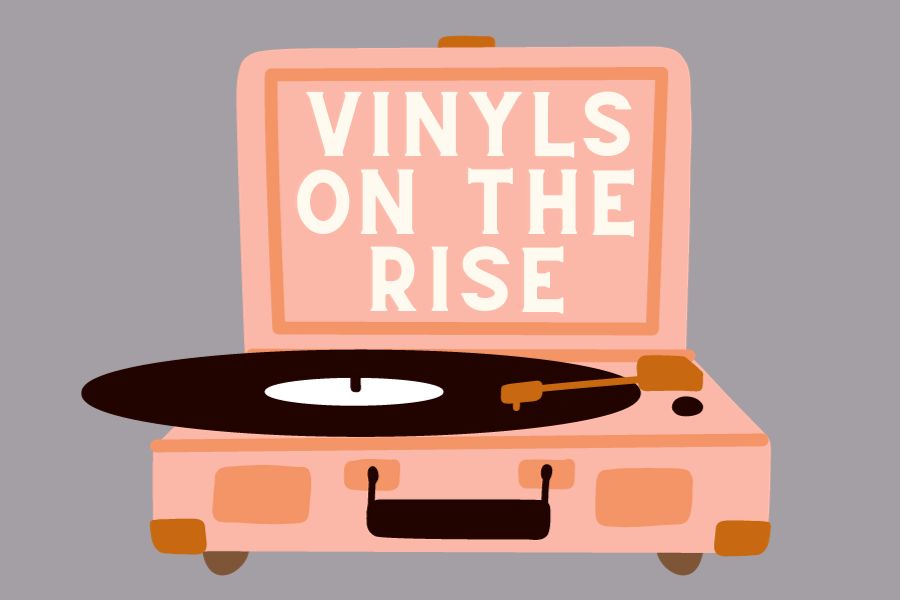In the early 2000s, a new way of listening to music was developed through the creation of streaming platforms such as Spotify, Apple Music and Pandora. Streaming platforms allow people to access any song they want to hear with the click of a button. This was a big contrast compared to CDs, another transformation that was similar to vinyls but in a smaller, easier format. However, in recent years, teenagers have started to let go of streaming platforms and CDs in favor of vinyls.
Despite the easy accessibility of streaming platforms, many have reverted to the classic way of listening to music, largely because of their aesthetic appeal and more vibrant sound quality. In the first half of this year alone, vinyl sales have increased by over 20 percent.
Vinyls are not a new concept, in fact they have gone through various waves of popularity. When CDs were introduced in the 1990s, vinyl sales underwent a dramatic decrease as people opted for the cheaper, easier option. In the digital age, however, CDs have become far less prevalent, yet vinyls continue to gain popularity.
A large reason for this is simply because it’s a trend. From scrunchies to bucket hats and crop tops, Generation Z loves to hop back onto old trends and bring them new life. This new intake in vinyls is just one of these trends.
Many of the teenagers buying vinyls nowadays do not even own a record player. These buyers are motivated by the pleasing aesthetics that vinyls provide. There are a variety of designs and eye-catching visuals serving as covers for their favorite albums, persuading buyers to purchase the albums just to admire their cool look.
Another reason why teenagers and young adults have transitioned to buying vinyls is for the experience. Unlike the ordinary method of clicking a button on your phone and connecting your headphones, listening to vinyls provide a unique, authentic experience, immersing people in the music they are listening to. In an age where people are constantly looking at their cell phone or computer, vinyls offer a break from screens; they can listen to music in peace, without worrying about any calls or notifications that may come their way.
Yet another aspect teenagers keep in mind when buying vinyls is the sound quality. Digital music representations offer a louder, more accurate sound that has been meticulously curated, developed and compressed into storage. Comparatively, vinyls tend to have a warmer sound and better dynamics, due to the higher frequency response and lower dynamic range of records. Even though music streaming platforms technically have a “better” sound, many like the imperfect, consistent sound of vinyls.
Ultimately, the main reason people have for collecting or listening to vinyls is to support their favorite artist individually. For example, Taylor Swift’s “Midnights” vinyl sold 945,000 copies last year. Part of the reason these records were so popular was because Swift created four variants of the album’s vinyl, which formed a clock when put together. This motivated people to buy multiple copies of the album, even if they did not really need to buy four copies of the same album if all they cared about was listening to it.
Whether vinyls are bought for the aesthetics, the sound or the love of the artist, the rise of sales is undeniable. As teenagers continue to collect these records, we can all feel the nostalgia of what life once was before streaming platforms came to be.









